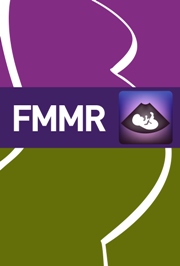Article contents
GLOMERULONEPHRITIS AND THE NEPHROTIC SYNDROME IN PREGNANCY
Published online by Cambridge University Press: 23 April 2010
Extract
Glomerulonephritis (GN) may be manifest clinically in several ways. It may be asymptomatic and associated with only minor urinary dipstick abnormalities, GN may present with one of the classic renal nephritic or nephrotic syndromes, or may be associated with progressive chronic kidney disease with hypertension and the gradual development of uraemia, or it may present with fulminating life threatening illness with severe acute kidney injury. The development of GN may indicate a primary renal limited disease, or may be secondary in association with systemic diseases such as systemic lupus erythematosus (SLE), myeloma, infections or diabetes. Although immunological abnormalities underlie the development of many forms of GN, precise pathogenic mechanisms remain unclear and diagnostic labels may simply reflect a description of the glomerular histological changes observed (Table 1).
- Type
- Research Article
- Information
- Copyright
- Copyright © Cambridge University Press 2010
References
REFERENCES
- 3
- Cited by


